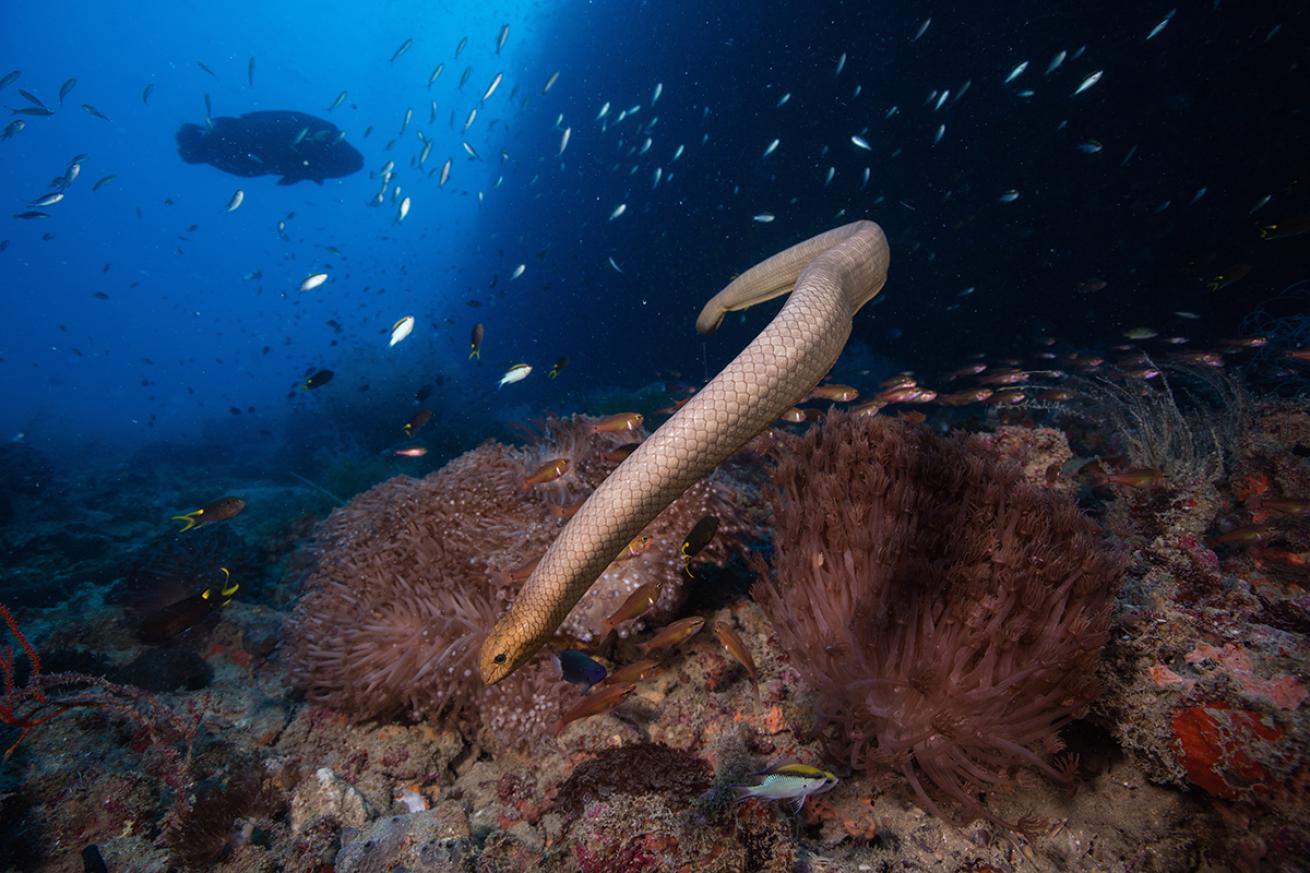Misdirected Sexual Attraction to Blame for Sea Snake ‘Attacks’ on Divers, Study Shows

Shutterstock.com/Gabriel GuzmanAn olive sea snake swims through the ocean.
If a sea snake charges a diver underwater, it may actually be looking for love rather than conflict, a recent study shows.
Highly venomous olive sea snakes have exhibited a pattern of “attacking” divers by charging them, chasing them and sometimes even biting them. New research, however, indicates that male sea snakes likely think divers are potential mates, and females may see them as possible refuges from male attention.
The study, published in Scientific Reports, calls on data collected on the Great Barrier Reef from 1994 to 1995 by paper co-author Tim Lynch. He reported encountering 158 sea snakes and being approached by 74 of them. Approaches were more common in May through August, which is sea snake mating season.
During mating, male and female sea snakes exhibit differing behaviors. Males will court females, flicking the ladies’ bodies with their tongues to check the chemicals on her skin. This alerts the males to whether their potential mates are, in fact, the correct species and sex, as they can’t identify shapes underwater very well.
Rick Shine, professor of biological sciences at Macquarie University in Sydney, tells CNN that male sea snakes start the courting process as soon as they see a new female.
After confirming a potential mate, the male will "[align] his body with [the female’s], maybe wrapping coils around her to hold her in place so he can position himself for copulation," Shine says. "But females often aren't interested, so they zoom away and hide in the coral."
The study found male sea snakes were more likely than females to approach humans. In some cases, males would flick their tongue at the divers, and in others, they would even completely coil around a fin.
In 13 recorded cases, sea snakes charged at the diver. This was mostly observed after the male snakes had come off an unsuccessful chase of a female or an interaction with a competing male. When females charged divers, it was typically after successfully dodging a male’s courtship.
"These patterns suggest that 'attacks' by sea snakes on humans result from mistaken identity during sexual interactions," the study states.
Mistake or not, large sea snakes are potentially deadly to humans, and interactions with divers can be.
"Having a giant snake hurtle towards you and start checking you out can be life-threatening even if the snake doesn't try to bite you," Shine says. "Panic is deadly."
So, what should a diver do if approached for courtship or refuge? Shine’s team recommends staying as still as possible and letting the snake flick its tongue to identify you.
"Our study shows that keeping calm is the key. The snake is not attacking you," Shine says. "He just thinks that you may be a female snake. And once he works out that's not the case, he'll wander off to look for love elsewhere."











